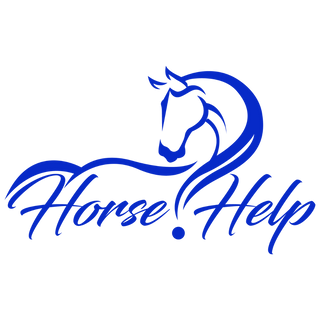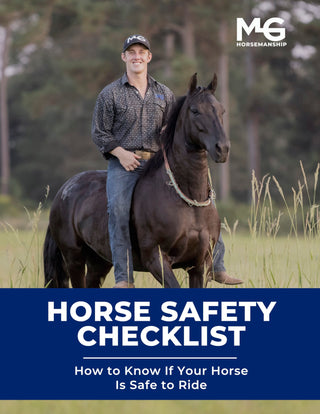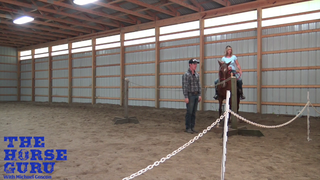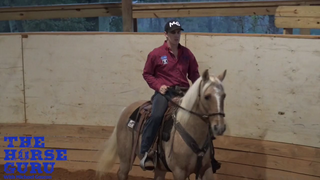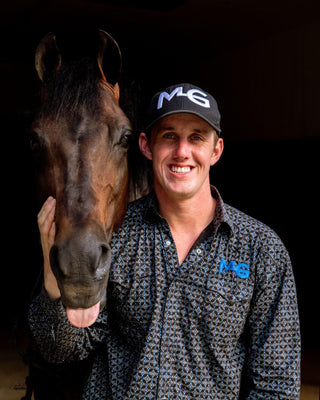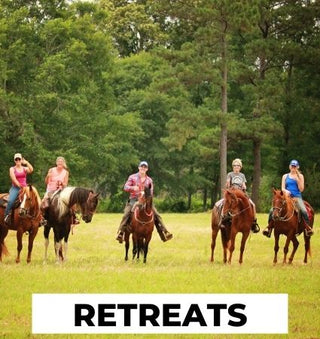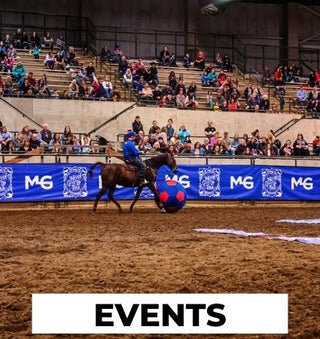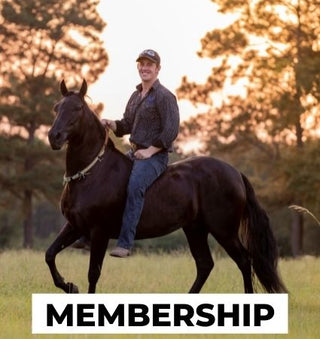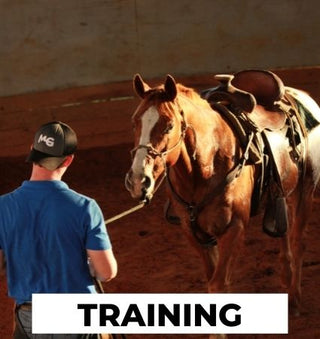Watch the Video Here or continue reading below!
As your horse progresses through the levels of training, shoulder control becomes a vital component for refined riding and communication. In this in-depth Q&A session, world-renowned horse trainer Michael Gascon answers questions from students working on the 10th-grade concept of disengaging the shoulders. From groundwork to saddle, this post breaks down Gascon’s methods to help you get smoother turns, better response, and full-body control.
The Three Foundational Buttons of Horsemanship
Michael emphasizes that no matter how advanced your training becomes, everything comes back to three basic “buttons”:
-
Button #1: The Face
Control the horse’s head using the seam of your jeans as a guide. You must be able to bend and direct the face before anything else can happen. -
Button #2: The Hindquarters
Bend the horse’s face toward their hind end to disengage the hips. -
Button #3: The Shoulders
Bring the horse’s head toward their shoulder to move the front end. This advanced move is essential for refined maneuvers and is the heart of 10th-grade training.
Motion Over Maneuver: Why Forward Movement Matters
A common mistake riders make is focusing too much on the maneuver and forgetting about forward motion. Without consistent movement, horses lose rhythm and resistance increases. Gascon reminds us:
“It’s more important that he’s moving than that he gets there perfectly.”
By maintaining momentum and using subtle shifts in seat, leg, and rein pressure, you can guide the horse’s shoulders into the correct position without sacrificing energy.
Groundwork Foundation: Square Dancing and the Ballerina
Before expecting performance under saddle, groundwork must be solid.
-
Square Dancing (Groundwork): Teaching a horse to move its shoulders and hindquarters independently from the ground.
-
Ballerina (Under Saddle): The mounted version of these movements.
If your horse resists or side-passes instead of disengaging, go back to groundwork. Use a lead rope and crop to create pressure zones, ensuring the horse bends and moves away from pressure while respecting your space.
How to Troubleshoot Sticky Shoulders
If your horse struggles with sticky shoulders or pivots incorrectly, try this:
-
Use Outside Aids: Sit in your outside stirrup, remove the outside rein, and bend the horse inward using inside rein and leg.
-
Drive Forward While Bending: This encourages the horse to cross over with the front legs, shifting weight away from the sticky spot.
Recognizing Common Pitfalls
Gascon highlights the two most common errors in shoulder disengagement:
-
Not Driving Forward: Always keep forward motion active.
-
Lack of Respect for Space: Ensure the horse yields to pressure, not against it.
Inconsistent results often stem from these issues. Reset by reinforcing respect and forward energy from the ground.
Advanced Tip: Teaching the Spin
When teaching a horse to spin:
-
Start With the Face: Focus on getting the horse’s head to shy away from you.
-
Add the Pressure to the Shoulder: Once the horse understands face pressure, layer in a cue on the shoulder to complete the spin.
Every time the horse takes a correct step, release pressure and praise. This reward reinforces the behavior and speeds up learning.
Q&A Highlights: Real Challenges, Real Solutions
Q: My horse walks forward instead of spinning. What should I do?
👉 Don’t try to hold them still—guide them with pressure on the face and allow forward energy to assist the movement.
Q: My mare side-passes instead of disengaging her shoulder.
👉 Revisit groundwork and ensure she’s bending properly and respecting your bubble before retrying under saddle.
Q: My horse spins too fast and I can't keep up.
👉 That’s a good problem! After a few short sessions on the ground, transition to saddle work to harness the enthusiasm into refined movement.
Final Thoughts: Control = Confidence
Ultimately, the goal isn’t just to control the horse’s body—it’s to give the rider peace of mind and the confidence that comes from clear, effective communication. When you have control of the head, shoulders, and hindquarters, the horse has no say in where you're going—and that’s the kind of unity great horsemanship is built on.
